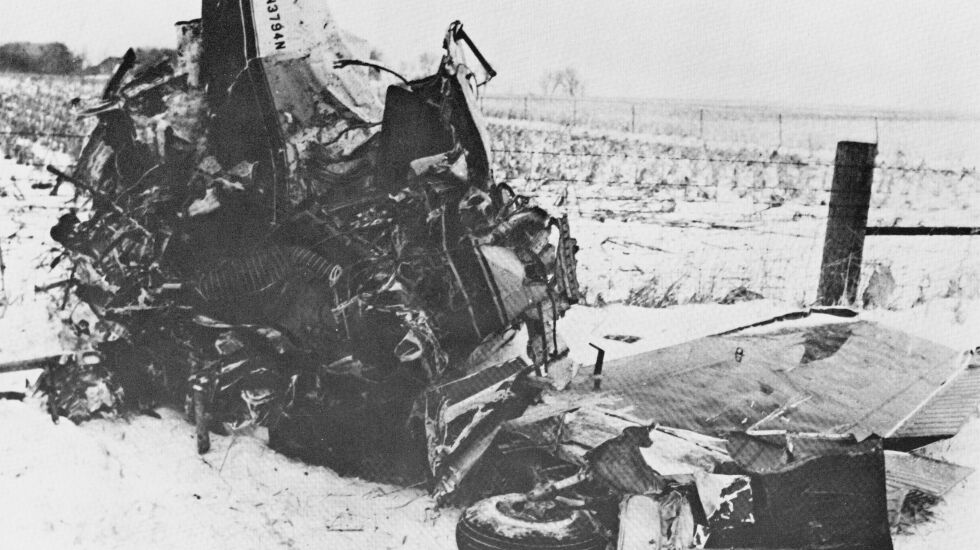Today is Feb. 8, 2023, probably, if you are reading this in a physical, ink and wood pulp newspaper on Wednesday, and not stumbling across it on the internet some other day in the tractless span of time before, or after.
Whatever day it is, were I to ask you what significant event occurred on Feb. 8, you might be stumped.
Now the third of February might be easier. On Feb. 3, 1959, in what would be widely remembered as the “Day the Music Died,” pop stars Buddy Holly, Ritchie Valens, J.D. “Big Bopper” Richardson, along with young pilot Roger Peterson, died in a plane crash the morning after playing the Surf Ballroom in Clear Lake, Iowa. The on-this-day-in-history vignette usually ends with Don McLean penning his homage, “American Pie,” a cryptic, 8 minute and 42 second hit song released in 1971.
A shame to stop here. Because this is where the story starts to get interesting.
The music did not die Feb. 3. Only the musicians did, and then just the top stars of the 24-date “Winter Dance Party Tour” of the Midwest. The rest of the performers went by balky, cold, broken-down bus. Where the Big Bopper, singer of “Chantilly Lace,” was supposed to ride. But he had a cold, and asked 21-year-old Waylon Jennings, Holly’s bassist, for his seat on the airplane, and the two swapped. Valens won his fatal seat in a coin toss.
The surviving musicians, shocked and grief-stricken, performed the day of the crash, in Moorhead, Minnesota.
They played Sioux City the day after the crash. And Des Moines the day after that. Cedar Rapids the day after that. Spring Valley, Illinois the day after that.
The next night, Feb. 8, was the Aragon Ballroom in Uptown.
Two observations:
First, as a nation we are more sensitive — or, if you insist, soft, though I prefer “humane.” Under those same circumstances today, I can’t imagine a musical tour would continue. Contrast the Winter Dance Party to what happened when Damar Hamlin collapsed of a cardiac arrest in the first quarter of a Monday Night Football game — the game was canceled, the fans sent home. And he survived.
Second, the youth culture that would dominate society in the 1960s had not yet flexed its grip. We forget how marginal kids used to be. Children were seen and not heard. Especially their music. The Tribune ran a brief item on the crash on page 12. The Daily News and the Sun-Times ran the stories on their front pages, the Times noting that at first the surviving musicians were too sad to do the show that night in Moorhead, ”but they changed their minds and remained true to the ‘show must go on’ tradition.
Actually, tour promoter, Irv Feld, of Chicago, refused to pay them unless they continued.
Neither the Daily News or the Tribune so much as mentioned Holly’s name the rest of the year. The Sun-Times noted the Civil Aeronautics Board blaming the inexperienced pilot for the crash in a brief squib on page 61, under the obituary of a cheese expert. Seven months after the crash.

I was uncertain whether the scheduled Feb. 8 Aragon concert really occurred. Documentary filmmakers spent five years tracking down fans who attended Winter Party Dance Tour gigs without locating anyone claiming to have seen the Aragon show. I had to dig a little to reassure myself the Aragon concert probably took place, striking paydirt in the autobiography of Waylon Jennings, who went on to become a country music star. Jennings had to step up and sing Holly’s songs.
“I was out there all alone, lost and scared to death. I had no clue. It seemed to take forever, crawling through Ohio and Iowa and Illinois,” he wrote. “In Chicago, we played the Aragon Ballroom and a girl named Penny took me under her wing.”
Jennings was shocked that the promoter forced them to play, and that venues tried to steal their share of the gate.
“I couldn’t believe people would act so unfeeling,” he wrote.
For years, Jennings also felt responsible for the crash, because of some innocent bandmate needling. Holly wasn’t happy that his bassist wouldn’t be accompanying him on the plane ride.
“You’re not going with me tonight, huh? Did you chicken out?” Holly asked, just before the chartered Beechcraft Bonanza took off. “I hope your damn bus freezes up again.”
“Well,” Jennings replied. “I hope your ol’ plane crashes.”








